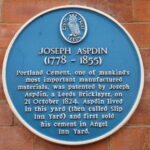 People in our modern-day world truly take some of history’s inventions for granted. Things that have been around for a long time, are especially susceptible. Around 3000 BC, the Egyptians used early concrete forms as mortar in their construction work. The Great Pyramids at Giza were built from an early form of concrete, and they are still standing today. It seems strange to think of concrete existing way back then, but it actually did. It might not have been in exactly the same form as the concrete of today. In fact, the Bible tells of using clay and straw to make bricks and mortar. It seems rather archaic to us these days, and but then it seems to have lasted a whole lot longer than some of the concrete of today, so maybe some of it was better.
People in our modern-day world truly take some of history’s inventions for granted. Things that have been around for a long time, are especially susceptible. Around 3000 BC, the Egyptians used early concrete forms as mortar in their construction work. The Great Pyramids at Giza were built from an early form of concrete, and they are still standing today. It seems strange to think of concrete existing way back then, but it actually did. It might not have been in exactly the same form as the concrete of today. In fact, the Bible tells of using clay and straw to make bricks and mortar. It seems rather archaic to us these days, and but then it seems to have lasted a whole lot longer than some of the concrete of today, so maybe some of it was better.
Portland cement was invented by Joseph Aspdin of England in 1824. The first concrete  paved street in the United States was laid in Bellefontaine, Ohio in 1891. The street was paved by George W Bartholomew, who owned the Buckeye Portland Cement Company and convinced city officials to let him pave an eight-foot-wide strip of Main Street with a mixture of sand, stone, and cement. Two years later, city officials agreed to let Bartholomew pave an entire block of Court Avenue between Main Street and Opera Street, which today remains the oldest concrete street in America, and it still exists, unlike some of the products currently used for streets today.
paved street in the United States was laid in Bellefontaine, Ohio in 1891. The street was paved by George W Bartholomew, who owned the Buckeye Portland Cement Company and convinced city officials to let him pave an eight-foot-wide strip of Main Street with a mixture of sand, stone, and cement. Two years later, city officials agreed to let Bartholomew pave an entire block of Court Avenue between Main Street and Opera Street, which today remains the oldest concrete street in America, and it still exists, unlike some of the products currently used for streets today.
Steel-reinforced concrete was developed by the end of the 19th century. August Perret designed and built an apartment building in Paris using steel-reinforced concrete in 1902. The building was widely admired, and with that building came a new popularity for concrete. In fact, the building influenced further development of reinforced concrete. Eugène Freyssinet really pioneered reinforced-concrete construction by building two colossal parabolic-arched airship hangars at Orly Airport in Paris in 1921.
Concrete has undergone several changes since 1921. During the 21st century, concrete manufacturers have 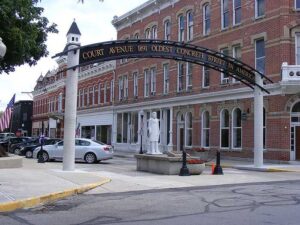 sstarted changing many of their product formulas in ways that increase early strength and lessen later age trength. This threw me a little bit, but the primary reason for this shift is said to be practical…”On a construction site, you can remove the forms from new concrete much faster if it has high early strength 1. Additionally, according to AZoBuild.com, concrete has gone through numerous changes over the last few decades despite its appearance looking almost the same. These changes include the development of environmentally friendly concrete products.” I’m not sure these changes are all that good, because they seem to cause more cracking and an earlier breakdown of the concrete. I’m not a contractor, but that doesn’t seem like a good thing to me.
sstarted changing many of their product formulas in ways that increase early strength and lessen later age trength. This threw me a little bit, but the primary reason for this shift is said to be practical…”On a construction site, you can remove the forms from new concrete much faster if it has high early strength 1. Additionally, according to AZoBuild.com, concrete has gone through numerous changes over the last few decades despite its appearance looking almost the same. These changes include the development of environmentally friendly concrete products.” I’m not sure these changes are all that good, because they seem to cause more cracking and an earlier breakdown of the concrete. I’m not a contractor, but that doesn’t seem like a good thing to me.
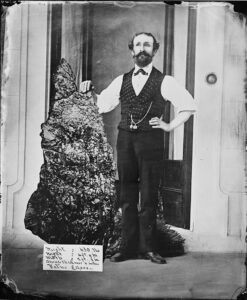 Bernhardt Otto Holtermann, who was born on April 29, 1838, was a prospector who owned part of an Australian claim where rich veins of gold were discovered after years of dry digging. I suppose it does take perseverance to successfully mine for gold, but when you consider that Holtermann finally discovered gold afteryears of digging, I would say that mining for gold also takes faith. Holtermann was born in Germany, and at adulthood set sail for Sydney, Australia in order to avoid military service. Most of his mining years were unsuccessful, including the year he even blew himself up with a premature explosion of blasting powder. Of course, his accidental explosion did not kill him, and must not have been very strong, because at the time of his greatest find, he still had all his limbs.
Bernhardt Otto Holtermann, who was born on April 29, 1838, was a prospector who owned part of an Australian claim where rich veins of gold were discovered after years of dry digging. I suppose it does take perseverance to successfully mine for gold, but when you consider that Holtermann finally discovered gold afteryears of digging, I would say that mining for gold also takes faith. Holtermann was born in Germany, and at adulthood set sail for Sydney, Australia in order to avoid military service. Most of his mining years were unsuccessful, including the year he even blew himself up with a premature explosion of blasting powder. Of course, his accidental explosion did not kill him, and must not have been very strong, because at the time of his greatest find, he still had all his limbs.
Holtermann’s “claim to fame” gold nugget was the largest gold specimen ever found, 59 inches long, weighing 630 pounds, and with an estimated gold content of 3,000 troy ounces. It was found at Hill End, near Bathurst, New South Wales. The nugget brought him enough wealth to build a mansion in North Sydney. Today, the mansion is one of the boarding houses at Sydney Church of England Grammar School (known as the Shore school). While working with one of his partners and later brother-in-law, Ludwig Hugo ‘Louis’ Beyers in their Star of Hope Gold Mining Company, in which he and Beyers were among the partners, they struck it rich. On February 22, 1868, Holtermann married Harriett Emmett, while Beyers married her sister Mary. On October 19, 1872, the Holtermann Nugget was discovered. While it was not “strictly speaking” a nugget, it was a gold specimen, a mass of gold embedded in rock, in this case quartz. Holtermann attempted to buy the 3,000-troy-ounce specimen from the company, offering £1000 over its estimated value of £12,000 (about AU$1.9 million in 2016 currency, AU$4.8 million on the 2017 gold price), 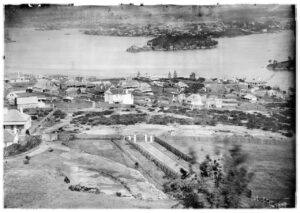 but was turned down, and the nugget was sent away to have the gold extracted. Holtermann was so upset about that, that resigned from the company in February 1873.
but was turned down, and the nugget was sent away to have the gold extracted. Holtermann was so upset about that, that resigned from the company in February 1873.
Holtermann did manage to get a photograph of himself with the nugget. This famous photo of Holtermann next to a giant “nugget” was taken by an unknown photographer. After leaving the Star of Hope Gold Mining Company, Holtermann was elected as a member for Saint Leonard’s parliament in 1882. Tragically, at the young age of just 47 years, Holtermann died in Sydney, Australia on his birthday, April 29, 1885, of “cancer of the stomach, cirrhosis of the liver, and dropsy.” He left behind his wife, three sons, and two daughters.
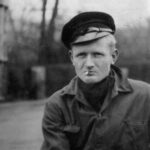 Bent Faurschou Hviid, who was born January 7, 1921, later became a member of the Danish resistance group Holger Danske during World War II. Because of his red hair, Hviid was nicknamed “Flammen,” which means “The Flame.” In 1951, he and his Resistance partner Jørgen Haagen Schmith, were posthumously awarded the United States Medal of Freedom by President Harry Truman. The Presidential Medal of Freedom is the highest civilian award of the United States, alongside the Congressional Gold Medal. The award is not limited to US citizens and, while it is a civilian award, it can also be awarded to military personnel and worn on the uniform.
Bent Faurschou Hviid, who was born January 7, 1921, later became a member of the Danish resistance group Holger Danske during World War II. Because of his red hair, Hviid was nicknamed “Flammen,” which means “The Flame.” In 1951, he and his Resistance partner Jørgen Haagen Schmith, were posthumously awarded the United States Medal of Freedom by President Harry Truman. The Presidential Medal of Freedom is the highest civilian award of the United States, alongside the Congressional Gold Medal. The award is not limited to US citizens and, while it is a civilian award, it can also be awarded to military personnel and worn on the uniform.
If you were to ask the men who were a part of the Holger Danske, they would tell you that no other resistance member was as hated or sought after by the Germans as was Hviid. Leader of the Holger Danske from 1943 through 1945, Gunnar Dyrberg said in the 2003 Danish documentary film, “With a Right to Kill,” that no one knows exactly how many executions “The Flame” performed, but he was rumored to have killed 22 persons. In all, it is said that the Holger Danske carried out an estimated 400 executions…performed by the Resistance agents, but apparently no one man executed more than Hviid.
Hviid grew up during World War I and was 20 when the Germans occupied Denmark. He was not about to just sit back and let the Nazis take over his country…at least, not without a fight. He entered the Holger Danske resistance group in Copenhagen. He was assigned to kill Danish Nazi officials and collaborators…traitors, who in Hviid’s opinion, did not deserve to live.
“Flammen” often partnered with “Citronen” whose real name was Jørgen Haagen Schmith. “Citronen” means “the lemon.” Schmith got this nickname because he sabotaged a Citroën garage, destroying six German cars and a tank. Citronen usually drove for Flammen, who executed their given targets. The two men were the most famous resistance duo in Denmark during World War II. While they often worked together, the Germans put the highest bounty on Flammen’s head that they offered for any Resistance fighter, due to the Faurschou of Germans who were executed by Flammen.
On October 18, 1944, while Hviid was having dinner with his landlady and some other guests, someone knocked at the door. When the door was opened, a German officer demanded entry. Hviid, who was unarmed 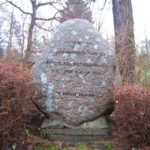 that evening, quickly went upstairs seeking to escape across the roof. When he reached the roof, he saw that the house was surrounded. Refusing to be taken alive, Hviid chewed a cyanide capsule and was dead a few seconds later.
that evening, quickly went upstairs seeking to escape across the roof. When he reached the roof, he saw that the house was surrounded. Refusing to be taken alive, Hviid chewed a cyanide capsule and was dead a few seconds later.
The witnesses later told of how they could hear the German soldiers upstairs cheering at the sight of the corpse. For the Germans, the form of death that took “The Flammen” out made no difference to the German soldiers. All that mattered was that he was dead. The soldiers dragged Hviid downstairs feet first, repeatedly causing his head to bang against the stairs as they went. I suppose it was a show of disrespect or perhaps, triumph for them, although they did not cause his death really.
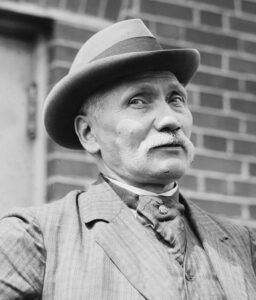
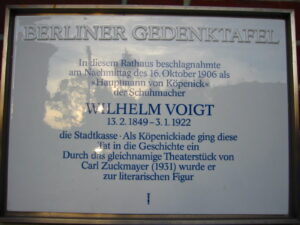 Sometimes, you come across someone so bold and so outrageous in their actions, that you are left in complete shock. Now, I can’t say that I am the one in complete shock, but I suspect that a squad of German soldiers might have been, when on October 17, 1906, Wilhelm Voigt, a 57-year-old German shoemaker, decided to impersonate an army officer and lead an entire squad of soldiers to help him steal 4,000 marks. When calculated to American dollars and to 2023, that would be approximately $33,000. While Voigt was a shoemaker by trade, he also had a long criminal record as a thief. So, he carefully planned the robbery, knowing that the German soldiers had a long history of blind obedience.
Sometimes, you come across someone so bold and so outrageous in their actions, that you are left in complete shock. Now, I can’t say that I am the one in complete shock, but I suspect that a squad of German soldiers might have been, when on October 17, 1906, Wilhelm Voigt, a 57-year-old German shoemaker, decided to impersonate an army officer and lead an entire squad of soldiers to help him steal 4,000 marks. When calculated to American dollars and to 2023, that would be approximately $33,000. While Voigt was a shoemaker by trade, he also had a long criminal record as a thief. So, he carefully planned the robbery, knowing that the German soldiers had a long history of blind obedience.
Voigt got his hands on a captain’s uniform and hatched a plan to manipulate the German army into following his lead, thereby exploiting their blind obedience to authority and making them assist in his crazy robbery scheme. Voigt approached a troop of soldiers in Tegel, Germany. Just outside Berlin, he boldly ordered the unit to follow him 20 miles into the town of Kopenik. The group had lunch, and then Voigt put the men in position and stormed into the mayor’s office. They proceeded to arrest the mayor. He demanded to see the cash box and 
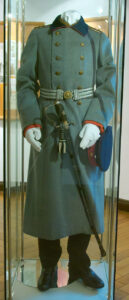 confiscated the 4,000 marks inside. The mayor was put in a car, and Voigt ordered that he be delivered to the police in Berlin. Just like that, the mayor was under arrest…by an imposter.
confiscated the 4,000 marks inside. The mayor was put in a car, and Voigt ordered that he be delivered to the police in Berlin. Just like that, the mayor was under arrest…by an imposter.
And the misfit squad of soldiers proceeded to Berlin, Voigt managed to disappear with the money. No one noticed that he had gone, and it took more than a few hours at the police station before everyone realized that it was all a hoax. As for the Kaiser…well, he thought the story was funny, but They had been humiliated by the man who was obviously impersonating a captain. They launched a massive campaign to find Voigt. They wanted revenge for the fact that they were fooled. Voigt was caught in Berlin a few days later. Voigt was found guilty and was sentenced to four years for the robbery. Somehow, the Kaiser himself pulled some strings to get him out in less than two. While he was a convicted criminal after that, the people considered him a bit of a hero for the rest of his life. He even posed for pictures for years. His little ruse, while considered a crime by the Germans, made Voigt famous.
 The Hoover Dam was built completed in 1935 and was considered was the greatest concrete project ever recorded, using more masonry than the Great Pyramid at Giza (4.5 million cubic yards) and equal to the amount needed to build a two-lane highway from Seattle to Miami, or a 4-foot-wide sidewalk around the Equator. It is the highest dam in the Western Hemisphere. The dam stands 726 feet above the Colorado River. It measures 1,244 feet across at the top, 660 feet thick at the base, and 45 feet thick at the top. It weighs a whopping 6.6 million tons, or at least the sum of its parts weighs that.
The Hoover Dam was built completed in 1935 and was considered was the greatest concrete project ever recorded, using more masonry than the Great Pyramid at Giza (4.5 million cubic yards) and equal to the amount needed to build a two-lane highway from Seattle to Miami, or a 4-foot-wide sidewalk around the Equator. It is the highest dam in the Western Hemisphere. The dam stands 726 feet above the Colorado River. It measures 1,244 feet across at the top, 660 feet thick at the base, and 45 feet thick at the top. It weighs a whopping 6.6 million tons, or at least the sum of its parts weighs that.
The Mike O’Callaghan–Pat Tillman Memorial Bridge came along 75 years later. It is an arch bridge that spans the Colorado River between the states of Arizona and Nevada. Located in  the Lake Mead National Recreation Area approximately 30 miles southeast of Las Vegas, it was designed to reroute US 93 from its previous routing along the top of Hoover Dam and removed several hairpin turns and blind curves from the route. The new bridge, which opened in 2010, carries Interstate 11 and US Route 93 over the Colorado River. It was the most important part of the Hoover Dam Bypass project. It is jointly named for Mike O’Callaghan, Governor of Nevada from 1971 to 1979, and Pat Tillman, an American football player who left his career with the Arizona Cardinals to enlist in the United States Army and was killed in Afghanistan in 2004 by friendly fire.
the Lake Mead National Recreation Area approximately 30 miles southeast of Las Vegas, it was designed to reroute US 93 from its previous routing along the top of Hoover Dam and removed several hairpin turns and blind curves from the route. The new bridge, which opened in 2010, carries Interstate 11 and US Route 93 over the Colorado River. It was the most important part of the Hoover Dam Bypass project. It is jointly named for Mike O’Callaghan, Governor of Nevada from 1971 to 1979, and Pat Tillman, an American football player who left his career with the Arizona Cardinals to enlist in the United States Army and was killed in Afghanistan in 2004 by friendly fire.
While the original design of the Hoover Dam seemed like a great idea, it was shown to be dangerous as early as the 1960s. The dam was also inadequate for projected traffic volumes. Work  on a different design began in 1998, and in March of 2001, the Federal Highway Administration selected the route, which crosses the Colorado River approximately 1,500 feet downstream of Hoover Dam. The construction of the bridge approaches began in 2003, and construction of the bridge itself began in February 2005. The bridge was completed in 2010 and the entire bypass route on October 16, 2010…opening to vehicle traffic on October 19, 2010. The Hoover Dam Bypass project was completed within budget at a cost of $240 million; the bridge portion cost $114 million. The bridge was also strategically placed to help prevent a terrorist attack, because it kept visitors away from the dam itself.
on a different design began in 1998, and in March of 2001, the Federal Highway Administration selected the route, which crosses the Colorado River approximately 1,500 feet downstream of Hoover Dam. The construction of the bridge approaches began in 2003, and construction of the bridge itself began in February 2005. The bridge was completed in 2010 and the entire bypass route on October 16, 2010…opening to vehicle traffic on October 19, 2010. The Hoover Dam Bypass project was completed within budget at a cost of $240 million; the bridge portion cost $114 million. The bridge was also strategically placed to help prevent a terrorist attack, because it kept visitors away from the dam itself.

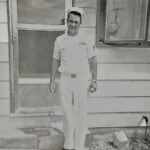 My husband, Bob Schulenberg’s uncle, Bernard Eugene “Butch” Hein was a well-known rancher is Forsyth, Montana. He was born June 28, 1945, in Miles City, Montana, to Walt and Vina Hein of Forsyth, Montana. Butch was the youngest of his mother’s five children (two of them, Marion and Walt Schulenberg) from a previous marriage. He also had a sister, Esther Hein and a brother, Eddie Hein. The family lived on a ranch outside of Forsyth. It was there that Butch first learned about ranching and knew that this would be his life’s work. While Butch would spend his childhood years helping on the ranch, there would be other life events that would have to take place before he finally settled into ranching. Butch graduated from Forsyth high school in 1964. The Vietnam war was in full swing, and Butch was drafted to the Navy in 1966. In all the years I have known Butch, he, like most other veterans never talked about his time during that war. I don’t know where he spent his service years, but I know that he was one of the men blessed to have made it home.
My husband, Bob Schulenberg’s uncle, Bernard Eugene “Butch” Hein was a well-known rancher is Forsyth, Montana. He was born June 28, 1945, in Miles City, Montana, to Walt and Vina Hein of Forsyth, Montana. Butch was the youngest of his mother’s five children (two of them, Marion and Walt Schulenberg) from a previous marriage. He also had a sister, Esther Hein and a brother, Eddie Hein. The family lived on a ranch outside of Forsyth. It was there that Butch first learned about ranching and knew that this would be his life’s work. While Butch would spend his childhood years helping on the ranch, there would be other life events that would have to take place before he finally settled into ranching. Butch graduated from Forsyth high school in 1964. The Vietnam war was in full swing, and Butch was drafted to the Navy in 1966. In all the years I have known Butch, he, like most other veterans never talked about his time during that war. I don’t know where he spent his service years, but I know that he was one of the men blessed to have made it home.
After returning home for his time in the service, Butch married Bonnie Wertz on April 13, 1968. Bonnie was the love of his life, and they began to build a life together. Their son, Scott Michael was born on November 5, 1969, and they were happy with their little family. Unfortunately, while they were preparing to expand their family, 
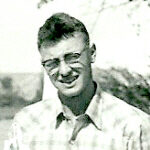 Bonnie was diagnosed with cancer. She delayed treatment in order to give their daughter a chance at life. Crista Dawn was born on October 26, 1973, but passed away on November 2, 1973. Bonnie continued to weaken and passed away on April 27, 1974. Butch was devastated. He felt like his life was over, but he had a son who needed him, so Butch pulled himself together, and raised his son as a single dad. Scott was his greatest achievement, and they were not only father and son, but later business partners and best friends. That friendship continued right up to Butch’s passing.
Bonnie was diagnosed with cancer. She delayed treatment in order to give their daughter a chance at life. Crista Dawn was born on October 26, 1973, but passed away on November 2, 1973. Bonnie continued to weaken and passed away on April 27, 1974. Butch was devastated. He felt like his life was over, but he had a son who needed him, so Butch pulled himself together, and raised his son as a single dad. Scott was his greatest achievement, and they were not only father and son, but later business partners and best friends. That friendship continued right up to Butch’s passing.
On October 13, 2023, a 78-year-old Butch, who was still very vibrant and full of life, got in his car and entered the interstate at his life-long hometown, Forsyth, Montana. Much of the rest is unknown at this time, but in the end, Butch was hit broadside by a semi-truck, and killed instantly. For his family, and all who knew him, this was a devastating loss. Butch was a friend to many, and certainly most of the town of Forsyth. He was also Grandpa to Scott’s three children with his wife Terri (née Wiederrick) Hein…Laura (Sean) Dailey, Carson Hein, and Lindsey Hein. Butch was so proud of his family, and one of the recent highlights of his life was being able to attend his granddaughter, Laura’s wedding on September 30, 2023. His grandchildren were his pride and joy. 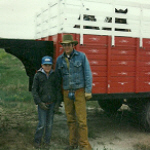
 Laura is a junior high school teacher in Chester, Montana; Carson works at the ranch with his dad and grandpa; and Lindsey is in college at Montana State University, having received a basketball scholarship. Butch was an amazing dad to Scott, and a blessing to Terri and the kids as well. His life’s work might have been ranching, but his family was his legacy. He will be forever loved and missed very much.
Laura is a junior high school teacher in Chester, Montana; Carson works at the ranch with his dad and grandpa; and Lindsey is in college at Montana State University, having received a basketball scholarship. Butch was an amazing dad to Scott, and a blessing to Terri and the kids as well. His life’s work might have been ranching, but his family was his legacy. He will be forever loved and missed very much.

 My little great grandson, Justin Petersen, who is the son of my grandson, Josh Petersen and his wife Athena Petersen, has had an eventful first year of life. When he was about a month old, Justin got the flu, which can be very scary for a baby. He spent some time in the hospital, and the doctors thought it might be tough and go, but with much prayer, he came out of it, and proceeded to flourish, and have great health. Nevertheless, that was a time none of us ever want to go through again.
My little great grandson, Justin Petersen, who is the son of my grandson, Josh Petersen and his wife Athena Petersen, has had an eventful first year of life. When he was about a month old, Justin got the flu, which can be very scary for a baby. He spent some time in the hospital, and the doctors thought it might be tough and go, but with much prayer, he came out of it, and proceeded to flourish, and have great health. Nevertheless, that was a time none of us ever want to go through again.
These days, Justin has a new job. He is a big brother. His baby brother, Axel was born 26 days before Justin turned 1 year old. That makes these brothers Irish Twins. Of course, they don’t know what that means yet, but they will eventually. Axel just knows that he’s tired, hungry, or wet. Justin just knows that there is a new baby at his house, and he really loves him. He doesn’t know it yet, but that new baby is going to 
 one of his best friends. Justin has a new built-in playmate. They will most likely fight over things like toys, space, and the last candy bar, among other things. Nevertheless, they will also learn that when it comes right down to it, brothers stick together. It will be a matter of knowing that “you might pick on your brother, but nobody else better do so.” That is sort of the sibling code. Siblings have to stick together!!
one of his best friends. Justin has a new built-in playmate. They will most likely fight over things like toys, space, and the last candy bar, among other things. Nevertheless, they will also learn that when it comes right down to it, brothers stick together. It will be a matter of knowing that “you might pick on your brother, but nobody else better do so.” That is sort of the sibling code. Siblings have to stick together!!
Justin was just beginning to take his early steps when his brother arrived, and now he is getting to be an old hand at it. I’m sure he realized that his mommy and daddy were going to have to be carrying his little brother around a lot, so he might have to walk on his own two feet. Not really, of course, because one-year-old-boys don’t think that way. Nevertheless, Justin knows that things have changed in his world, and he couldn’t be happier about it. Justin has always been a happy little boy, but he also has a “thinking” side to him too. I see it in him. He is a concentrator. I know it, 
 because I am a concentrator. We think things through, and sometimes people even think we are angry, because we tend to frown when we concentrate. Still, Justin has a goofy side too. He loves his toys and exploring new places. And Justin loves his Papa, my son-in-law, Kevin Petersen and Grandma, my daughter, Corrie Petersen. Still, his daddy is Justin’s fav!! Whenever he is at my house, and he finds out that his daddy is coming to pick him up, he stands at the door watching for him, and when he arrives…look out, because his daddy “hung the moon” and that’s a fact. Today is Justin’s first birthday. Happy birthday Justin!! Have a great day!! We love you!!
because I am a concentrator. We think things through, and sometimes people even think we are angry, because we tend to frown when we concentrate. Still, Justin has a goofy side too. He loves his toys and exploring new places. And Justin loves his Papa, my son-in-law, Kevin Petersen and Grandma, my daughter, Corrie Petersen. Still, his daddy is Justin’s fav!! Whenever he is at my house, and he finds out that his daddy is coming to pick him up, he stands at the door watching for him, and when he arrives…look out, because his daddy “hung the moon” and that’s a fact. Today is Justin’s first birthday. Happy birthday Justin!! Have a great day!! We love you!!

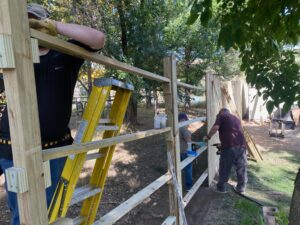 When my brother-in-law, Mike Stevens retired on July 1, 2022, our nephew, Ryan Hadlock, who had worked with his uncle for quite some time at Contango Energy, was promoted to the position. Ryan hadn’t been groomed for the new position, but they saw something in him…the ability to excel. Now, over a year later, Ryan is doing great at his job. He really enjoys the work, is well respected, and always received high praise from his bosses. Ryan knew the work that the men under him were to do, because that was the work he had done, but knowing the job, isn’t what makes him good at being a supervisor. That is something that not everyone can do, but Ryan is quite good at it.
When my brother-in-law, Mike Stevens retired on July 1, 2022, our nephew, Ryan Hadlock, who had worked with his uncle for quite some time at Contango Energy, was promoted to the position. Ryan hadn’t been groomed for the new position, but they saw something in him…the ability to excel. Now, over a year later, Ryan is doing great at his job. He really enjoys the work, is well respected, and always received high praise from his bosses. Ryan knew the work that the men under him were to do, because that was the work he had done, but knowing the job, isn’t what makes him good at being a supervisor. That is something that not everyone can do, but Ryan is quite good at it.
Ryan is quite handy in many ways. He and his wife, Chelsea recently helped his parents, Chris and Allyn Hadlock replace an old fence on their property. They did a great job, and now that fence will stand strong for a number of years to come. Fencing is hard work, but Ryan is no stranger to hard work, and he really loved helping his parents. Ryan likes working with his hands. This past summer, he and Chelsea rebuilt the retaining  wall at their house. Chelsea was quite impressed with Ryan’s abilities on the jackhammer, that he used to get the old wall out. I’ve never used a jackhammer, but I’ve heard that the person using it had better be pretty strong, because it’s quite the job.
wall at their house. Chelsea was quite impressed with Ryan’s abilities on the jackhammer, that he used to get the old wall out. I’ve never used a jackhammer, but I’ve heard that the person using it had better be pretty strong, because it’s quite the job.
Like his dad, Ryan could be an expert carpenter, but recently, Ryan has found that he is interested in watches, and the repair thereof. For anyone who has ever seen the inside of a watch, you know that there are about a zillion very small pieces in there, and if everything isn’t put back together just right, the watch will not work, so watch repair is another very impressive thing that Ryan can add to his list of capabilities.
Ryan and Chelsea are a part of a “football family” which comes stands to reason, when on person in the family is a coach of a college football team. That said, they go to quite a few of the Wyoming Cowboys football games. What is not quite so common is for them to attend the away games. This Saturday, that is going to change, however, because they will be heading to Colorado Springs for the Air Force vs Wyoming Cowboys game. Since it will be a first for them, I hope that the Cowboys can bring home the win. Of course, I always hope the Cowboys will bring home a win, because the members of this family are Pokes fans all the way.

 Ryan has decided to join the ranks of many men at this time, by growing out and keeping a beard. t is a trend these days, and many of the men I know wear a beard, so while it will be different on Ryan, it will not be that unusual in our family. I know it will look very nice, and I’m sure his family will be subjected to our family’s famous “whisker rub” that was started by my dad, Al Spencer. Ryan is a teaser from way back, so I’m sure he is looking forward to that tradition too. Today is Ryan’s birthday. Happy birthday Ryan!! Have a great day!! We love you!!
Ryan has decided to join the ranks of many men at this time, by growing out and keeping a beard. t is a trend these days, and many of the men I know wear a beard, so while it will be different on Ryan, it will not be that unusual in our family. I know it will look very nice, and I’m sure his family will be subjected to our family’s famous “whisker rub” that was started by my dad, Al Spencer. Ryan is a teaser from way back, so I’m sure he is looking forward to that tradition too. Today is Ryan’s birthday. Happy birthday Ryan!! Have a great day!! We love you!!
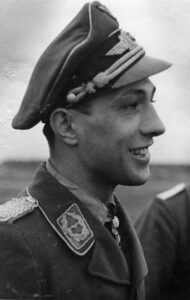 In every army, navy, and air force, there are exceptional soldiers…even among the enemy. During World War II, the German Luftwaffe had an incredible pilot. His name was Erich Rudorffer, and he is credited with shooting down thirteen Soviet aircraft in a single mission on October 11, 1943. In that historic mission while flying an FW-190, Rudorffer downed eight Yak-7s and five Yak-9s of the Soviet Air Force. He eventually shot down 222 enemy aircraft and ended up his combat career flying the Messerschmitt ME-262, the first operational jet fighter.
In every army, navy, and air force, there are exceptional soldiers…even among the enemy. During World War II, the German Luftwaffe had an incredible pilot. His name was Erich Rudorffer, and he is credited with shooting down thirteen Soviet aircraft in a single mission on October 11, 1943. In that historic mission while flying an FW-190, Rudorffer downed eight Yak-7s and five Yak-9s of the Soviet Air Force. He eventually shot down 222 enemy aircraft and ended up his combat career flying the Messerschmitt ME-262, the first operational jet fighter.
Still, it wasn’t just the number of planes he shot down that made him remarkable. It was also the fact that he managed to survive the war despite flying over 1000 missions and being shot down an incredible 16 times. He was even forced to parachute from his stricken fighter planes 9 of those times. Not just a Soviet killer, Rudorffer also shot down 86 aircraft operated by Western Allied air forces. He became a commercial pilot after World War II.
Rudorffer was born on November 1, 1917, in Zwochau, which was a part of the Kingdom of Saxony of the German Empire at that time. Strangely, or maybe not, very little is said or known about his parents. That was typical of the German leadership of that era. They felt like the state, and not the parents should raise the children, because…well, parents had no training in such things. Not that the German leadership did either, but they decided that they knew more than the parents, so they pulled the children from their parents’ homes and put them in boarding schools to “train” them in the German ways. After his graduation from school, Rudorffer received a vocational education as an automobile metalsmith specialized in coachbuilding, which was likely another of the German or “Nazi” way of deciding the course of the lives of the children. He might have stayed a mechanic were it not for World War I. “Rudorffer joined the military service of the Luftwaffe with Flieger-Ersatz-Abteilung 61 (Flier Replacement Unit 61) in Oschatz on April 16, 1936. From September 2 to October 15, 1936, he served with Kampfgeschwader 253 (KG 253—253rd Bomber Wing) and from October16, 1936 to February 24, 1937, he was trained as an aircraft engine mechanic at the Technische Schule Adlershof, the technical school at Adlershof in Berlin. On March 14, 1937, Rudorffer was posted to Kampfgeschwader 153 (KG 153—153rd Bomber Wing), where he served as a mechanic until end October 1938. After that, he was transferred to Flieger-Ersatz-Abteilung 51 (Flier Replacement Unit 51) based at Liegnitz in Silesia, present-day Legnica in Poland, for flight training. Rudorffer was first trained as a bomber pilot and then as a Zerstörer, a heavy fighter or destroyer, pilot. In the winter of 1944 Rudorffer was trained on the ME 262 jet fighter. In February 1945, he was recalled to command I. Gruppe JG 7 “Nowotny” from Major Theodor Weissenberger who replaced Steinhoff as Geschwaderkommodore. Rudorffer claimed 12 victories with the ME 262, to bring his total to 222. His tally 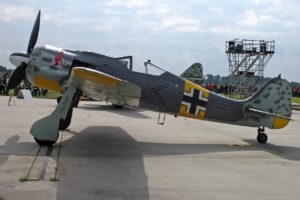 included 136 on the Eastern Front, 26 in North Africa, and 60 on the Western Front including 10 heavy bombers.”
included 136 on the Eastern Front, 26 in North Africa, and 60 on the Western Front including 10 heavy bombers.”
After the war ended, Rudorffer started out flying DC-2s and DC-3s in Australia. Later, he worked for Pan Am and the Luftfahrt-Bundesamt, Germany’s civil aviation authority. Rudorffer was honored as one of the characters in the 2007 Finnish war movie “Tali-Ihantala 1944.” A FW 190 participated, painted in the same markings as Rudorffer’s aircraft in 1944. The aircraft, now based at Omaka Aerodrome in New Zealand, still wears the colors of Rudorffer’s machine. Rudorffer died in April 2016 at the age of 98. At the time of his death, he was the last living recipient of the Knight’s Cross of the Iron Cross with Oak Leaves and Swords.

 My nephew, Riley Birky has changed so much over the years that he has been a part of our family. Riley is the middle child and eldest son of my sister-in-law, Rachel Schulenberg, who sadly passed away in 2021. Riley has grown and changed in the years that I have known him, but I can say that Riley is a soft-hearted man, who is a gentle and loving partner, dad, and brother. His family is so blessed to have him in their lives. Riley and his fiancée, Sierah Martin make their home in Byron, Wyoming. It is a small town, but that’s the way they like it. Riley grew up in Powell, Wyoming, so small town seem to really suit him best, and a small town is the place he wants to raise his family. It provides them with everything they love to do, like fishing and hiking.
My nephew, Riley Birky has changed so much over the years that he has been a part of our family. Riley is the middle child and eldest son of my sister-in-law, Rachel Schulenberg, who sadly passed away in 2021. Riley has grown and changed in the years that I have known him, but I can say that Riley is a soft-hearted man, who is a gentle and loving partner, dad, and brother. His family is so blessed to have him in their lives. Riley and his fiancée, Sierah Martin make their home in Byron, Wyoming. It is a small town, but that’s the way they like it. Riley grew up in Powell, Wyoming, so small town seem to really suit him best, and a small town is the place he wants to raise his family. It provides them with everything they love to do, like fishing and hiking.
The greatest blessing in Riley’s life has been his sweet partner, Sierah Martin, and the birth of his son, Ryder Birky, who was born on July 26, 2022. That was an epic day in Riley’s life. He has a heart of gold, and it is big 
 enough to allow for not only his fiancée and their son, but also his bonus son, Jace Swan, to whom Riley is a wonderful dad. Riley has also stepped up where his little brother, Tucker Schulenberg is concerned. Riley has extended his dad skills into being there for Tucker when he needs him most. Losing their mother, at such a young age was so hard on the boys and their sister Cassie, and Riley raising his brother is an amazing show of love for him, and for their mom. Riley has a heart of gold, and it is as big as Texas. He has been through a lot is his relatively young life, and he is using his life experience to be a great blessing to his family.
enough to allow for not only his fiancée and their son, but also his bonus son, Jace Swan, to whom Riley is a wonderful dad. Riley has also stepped up where his little brother, Tucker Schulenberg is concerned. Riley has extended his dad skills into being there for Tucker when he needs him most. Losing their mother, at such a young age was so hard on the boys and their sister Cassie, and Riley raising his brother is an amazing show of love for him, and for their mom. Riley has a heart of gold, and it is as big as Texas. He has been through a lot is his relatively young life, and he is using his life experience to be a great blessing to his family.
Riley loves being a family man. The house they live in, in Byron is filled with love, laughter, and lots of voices. Having three children in the house, even if one is almost grown, makes for a lot of noise. Nevertheless, Riley and Sierah are awesome parents of boys. They understand them, and most of the time, they don’t even mind 
 the noise that comes with three boys. Riley loves being in the outdoors, and all outdoor sports, especially fishing, and he loves teaching the boys about whatever he is doing. He has a lot of patience with their questions, and their childlike clumsiness. No child is a born expert, after all. It takes nurturing and patience on the part of their teacher and mentor, and Riley is a great mentor. He wants to teach the boys about whatever he is doing and make their lives rich in knowledge and love. He is a great dad, and a wonderful blessing to the boys and to Sierah!! Today is Riley’s birthday. Happy birthday Riley!! Have a great day!! We love you!!
the noise that comes with three boys. Riley loves being in the outdoors, and all outdoor sports, especially fishing, and he loves teaching the boys about whatever he is doing. He has a lot of patience with their questions, and their childlike clumsiness. No child is a born expert, after all. It takes nurturing and patience on the part of their teacher and mentor, and Riley is a great mentor. He wants to teach the boys about whatever he is doing and make their lives rich in knowledge and love. He is a great dad, and a wonderful blessing to the boys and to Sierah!! Today is Riley’s birthday. Happy birthday Riley!! Have a great day!! We love you!!

